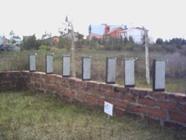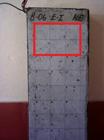Abstract
Corrosion in reinforced concrete structures is the most recurrent pathological manifestation in concrete structures, causing greater concern in coastal regions due to the presence of chloride ions. That said, there is a notable lack of data on the chloride concentration of concrete in natural conditions of exposure, especially in the marine atmosphere zone. Hence, this study aimed to evaluate the chloride profiles of concrete blocks molded with silica fume contents of 5% (CP V_5SA) and 10% (CP V_10SA) in relation to cement mass and w/b ratios of 0.45, 0.55 and 0.65. The concretes remained exposed in a marine atmosphere zone for a period of 9 years in Tramandaí, Rio Grande do Sul, Brazil. Powder samples were taken from the concrete blocks for further determination of the water-soluble chloride concentration. With regards to corrosion, the use of silica fume content in percentages of 5% and 10% is efficient in reducing chloride penetration; low w/b ratios showed higher surface concentrations. However, as the depth of the concrete surface increases, there is a reduction in these contents. In addition, the study showed that the reduction of the w/b ratio and the incorporation of silica fume were effective measures in reducing the concentration of chlorides over time.
Keywords:
Corrosion in reinforced concrete; Chlorides; Marine atmosphere zone

 Thumbnail
Thumbnail
 Thumbnail
Thumbnail
 Thumbnail
Thumbnail
 Thumbnail
Thumbnail
 Thumbnail
Thumbnail
 Thumbnail
Thumbnail
 Fonte:
Fonte:  Fonte: adaptada de Romano (2009).
Fonte: adaptada de Romano (2009).
 Fonte:
Fonte:  Fonte: Instituto Nacional de Meteorologia (2017).
Fonte: Instituto Nacional de Meteorologia (2017).
 Fonte: Instituto Nacional de Meteorologia (2017).
Fonte: Instituto Nacional de Meteorologia (2017).
